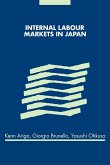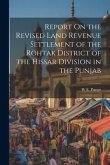Jurgen, Folker Frobel, Folker
The New International Division of Labour
Structural Unemployment in Industrialised Countries and Industrialisation in Developing Countries
Jurgen, Folker Frobel, Folker
The New International Division of Labour
Structural Unemployment in Industrialised Countries and Industrialisation in Developing Countries
- Broschiertes Buch
- Merkliste
- Auf die Merkliste
- Bewerten Bewerten
- Teilen
- Produkt teilen
- Produkterinnerung
- Produkterinnerung
The main thesis of this study is that the world economy is undergoing a profound structural change that is forcing companies to reorganise their production on a global scale.
Andere Kunden interessierten sich auch für
![Internal Labour Markets in Japan Internal Labour Markets in Japan]() Kenn ArigaInternal Labour Markets in Japan45,99 €
Kenn ArigaInternal Labour Markets in Japan45,99 €![Labour Markets in an Ageing Europe Labour Markets in an Ageing Europe]() Labour Markets in an Ageing Europe44,99 €
Labour Markets in an Ageing Europe44,99 €![The Theory and Policy of Labour Protection The Theory and Policy of Labour Protection]() A. SchäffleThe Theory and Policy of Labour Protection22,99 €
A. SchäffleThe Theory and Policy of Labour Protection22,99 €![The New Labour Outlook The New Labour Outlook]() Robert WilliamsThe New Labour Outlook18,99 €
Robert WilliamsThe New Labour Outlook18,99 €![History of Labour in the United States; Volume 2 History of Labour in the United States; Volume 2]() John Rogers CommonsHistory of Labour in the United States; Volume 232,99 €
John Rogers CommonsHistory of Labour in the United States; Volume 232,99 €![Labour and Capital After the War Labour and Capital After the War]() Sydney John ChapmanLabour and Capital After the War22,99 €
Sydney John ChapmanLabour and Capital After the War22,99 €![Report On the Revised Land Revenue Settlement of the Rohtak District of the Hissar Division in the Punjab Report On the Revised Land Revenue Settlement of the Rohtak District of the Hissar Division in the Punjab]() W. E. PurserReport On the Revised Land Revenue Settlement of the Rohtak District of the Hissar Division in the Punjab20,99 €
W. E. PurserReport On the Revised Land Revenue Settlement of the Rohtak District of the Hissar Division in the Punjab20,99 €-
-
-
The main thesis of this study is that the world economy is undergoing a profound structural change that is forcing companies to reorganise their production on a global scale.
Produktdetails
- Produktdetails
- Verlag: Cambridge University Press
- Seitenzahl: 444
- Erscheinungstermin: 29. Dezember 2008
- Englisch
- Abmessung: 229mm x 152mm x 26mm
- Gewicht: 716g
- ISBN-13: 9780521287203
- ISBN-10: 0521287200
- Artikelnr.: 26057290
- Herstellerkennzeichnung
- Libri GmbH
- Europaallee 1
- 36244 Bad Hersfeld
- gpsr@libri.de
- Verlag: Cambridge University Press
- Seitenzahl: 444
- Erscheinungstermin: 29. Dezember 2008
- Englisch
- Abmessung: 229mm x 152mm x 26mm
- Gewicht: 716g
- ISBN-13: 9780521287203
- ISBN-10: 0521287200
- Artikelnr.: 26057290
- Herstellerkennzeichnung
- Libri GmbH
- Europaallee 1
- 36244 Bad Hersfeld
- gpsr@libri.de
Tables; Abbreviations; Foreword; Introduction; 1. The new international
division of labour in the world economy; 2. The new international division
of labour: a phase in the development of the world capitalist system; Part
I. The Development of the Federal German Textile and Garment Industry as an
Example of the New International Division of Labour: 3. World production
and employment and garment industry, and world trade in textiles and
clothing; 4. Unemployment in the development of the world capitalist
system; Part I. The Development of the Federal German textile and garment
industry as determined by developments in the world economy; 5. The
export-orientated industrialisation of the developing and centrally planned
economies in the field of textiles and clothing; 6. The relocation of
production of companies from the Federal German textile and garment
industry to sites abroad; 7. Determinants of the development of the world
market for production sites; 8. The new international division of labour:
direction by and response of institutions from the traditional industrial
countries; 9. Conclusion; Part II. The Advance of the New International
Division of Labour: Employment Abroad by Federal German Industrial
Companies: 10. The new international division of labour and employment
abroad by Federal German industrial companies; 11. Production and
employment by region; 12. Structural features of production and employment
abroad; 13. The economic and political determinants and consequences of
increased production abroad; Part III. The World Market Oriented
Industrialisation of the Developing Countries: Free Production Zones and
World Market Factories: 14. Free production zones in Asia, Africa and Latin
America: a survey; 15. The structure of production in free production zones
and world market factories; 16. The labour market and working conditions in
free production zones and world market factories; 17. The impact of world
market oriented industrialisation on the socio-economic development of
developing countries.
division of labour in the world economy; 2. The new international division
of labour: a phase in the development of the world capitalist system; Part
I. The Development of the Federal German Textile and Garment Industry as an
Example of the New International Division of Labour: 3. World production
and employment and garment industry, and world trade in textiles and
clothing; 4. Unemployment in the development of the world capitalist
system; Part I. The Development of the Federal German textile and garment
industry as determined by developments in the world economy; 5. The
export-orientated industrialisation of the developing and centrally planned
economies in the field of textiles and clothing; 6. The relocation of
production of companies from the Federal German textile and garment
industry to sites abroad; 7. Determinants of the development of the world
market for production sites; 8. The new international division of labour:
direction by and response of institutions from the traditional industrial
countries; 9. Conclusion; Part II. The Advance of the New International
Division of Labour: Employment Abroad by Federal German Industrial
Companies: 10. The new international division of labour and employment
abroad by Federal German industrial companies; 11. Production and
employment by region; 12. Structural features of production and employment
abroad; 13. The economic and political determinants and consequences of
increased production abroad; Part III. The World Market Oriented
Industrialisation of the Developing Countries: Free Production Zones and
World Market Factories: 14. Free production zones in Asia, Africa and Latin
America: a survey; 15. The structure of production in free production zones
and world market factories; 16. The labour market and working conditions in
free production zones and world market factories; 17. The impact of world
market oriented industrialisation on the socio-economic development of
developing countries.
Tables; Abbreviations; Foreword; Introduction; 1. The new international
division of labour in the world economy; 2. The new international division
of labour: a phase in the development of the world capitalist system; Part
I. The Development of the Federal German Textile and Garment Industry as an
Example of the New International Division of Labour: 3. World production
and employment and garment industry, and world trade in textiles and
clothing; 4. Unemployment in the development of the world capitalist
system; Part I. The Development of the Federal German textile and garment
industry as determined by developments in the world economy; 5. The
export-orientated industrialisation of the developing and centrally planned
economies in the field of textiles and clothing; 6. The relocation of
production of companies from the Federal German textile and garment
industry to sites abroad; 7. Determinants of the development of the world
market for production sites; 8. The new international division of labour:
direction by and response of institutions from the traditional industrial
countries; 9. Conclusion; Part II. The Advance of the New International
Division of Labour: Employment Abroad by Federal German Industrial
Companies: 10. The new international division of labour and employment
abroad by Federal German industrial companies; 11. Production and
employment by region; 12. Structural features of production and employment
abroad; 13. The economic and political determinants and consequences of
increased production abroad; Part III. The World Market Oriented
Industrialisation of the Developing Countries: Free Production Zones and
World Market Factories: 14. Free production zones in Asia, Africa and Latin
America: a survey; 15. The structure of production in free production zones
and world market factories; 16. The labour market and working conditions in
free production zones and world market factories; 17. The impact of world
market oriented industrialisation on the socio-economic development of
developing countries.
division of labour in the world economy; 2. The new international division
of labour: a phase in the development of the world capitalist system; Part
I. The Development of the Federal German Textile and Garment Industry as an
Example of the New International Division of Labour: 3. World production
and employment and garment industry, and world trade in textiles and
clothing; 4. Unemployment in the development of the world capitalist
system; Part I. The Development of the Federal German textile and garment
industry as determined by developments in the world economy; 5. The
export-orientated industrialisation of the developing and centrally planned
economies in the field of textiles and clothing; 6. The relocation of
production of companies from the Federal German textile and garment
industry to sites abroad; 7. Determinants of the development of the world
market for production sites; 8. The new international division of labour:
direction by and response of institutions from the traditional industrial
countries; 9. Conclusion; Part II. The Advance of the New International
Division of Labour: Employment Abroad by Federal German Industrial
Companies: 10. The new international division of labour and employment
abroad by Federal German industrial companies; 11. Production and
employment by region; 12. Structural features of production and employment
abroad; 13. The economic and political determinants and consequences of
increased production abroad; Part III. The World Market Oriented
Industrialisation of the Developing Countries: Free Production Zones and
World Market Factories: 14. Free production zones in Asia, Africa and Latin
America: a survey; 15. The structure of production in free production zones
and world market factories; 16. The labour market and working conditions in
free production zones and world market factories; 17. The impact of world
market oriented industrialisation on the socio-economic development of
developing countries.









